Abstract
Five students classified as profoundly/multiply handicapped were trained to use microswitches to indicate reinforcer preferences. The students were trained to emit a designated motoric response (raise arm or raise head) which in turn activated a microswitch. The microswitches were connected to battery-operated toys and devices, and served to provide immediate, contingent consequences to the students for their motoric responding. The results of the investigation were evaluated within a multiple baseline (across students) with alternating treatments (potential reinforcers) design. During baseline, the students were provided with the switches and devices, but the switches were not connected to the devices. During the training conditions, the switches activated the devices. Evaluation of the devices was conducted by recording the cumulative frequency and duration of the students' responses. When the microswitches activated the devices during training, a substantial increase in the duration of motoric responding occurred for all students. In addition, some students performed differentially across devices, suggesting that they had reinforcer preferences.
Full text
PDF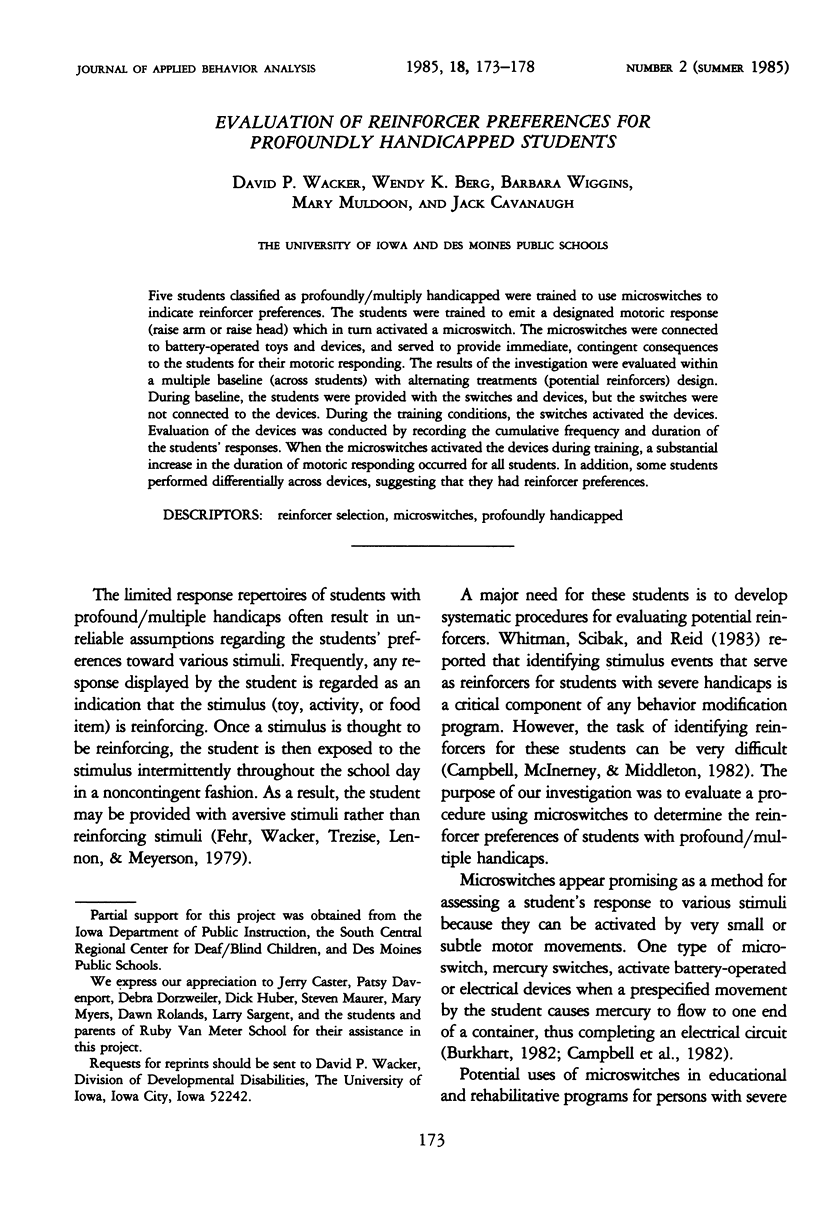
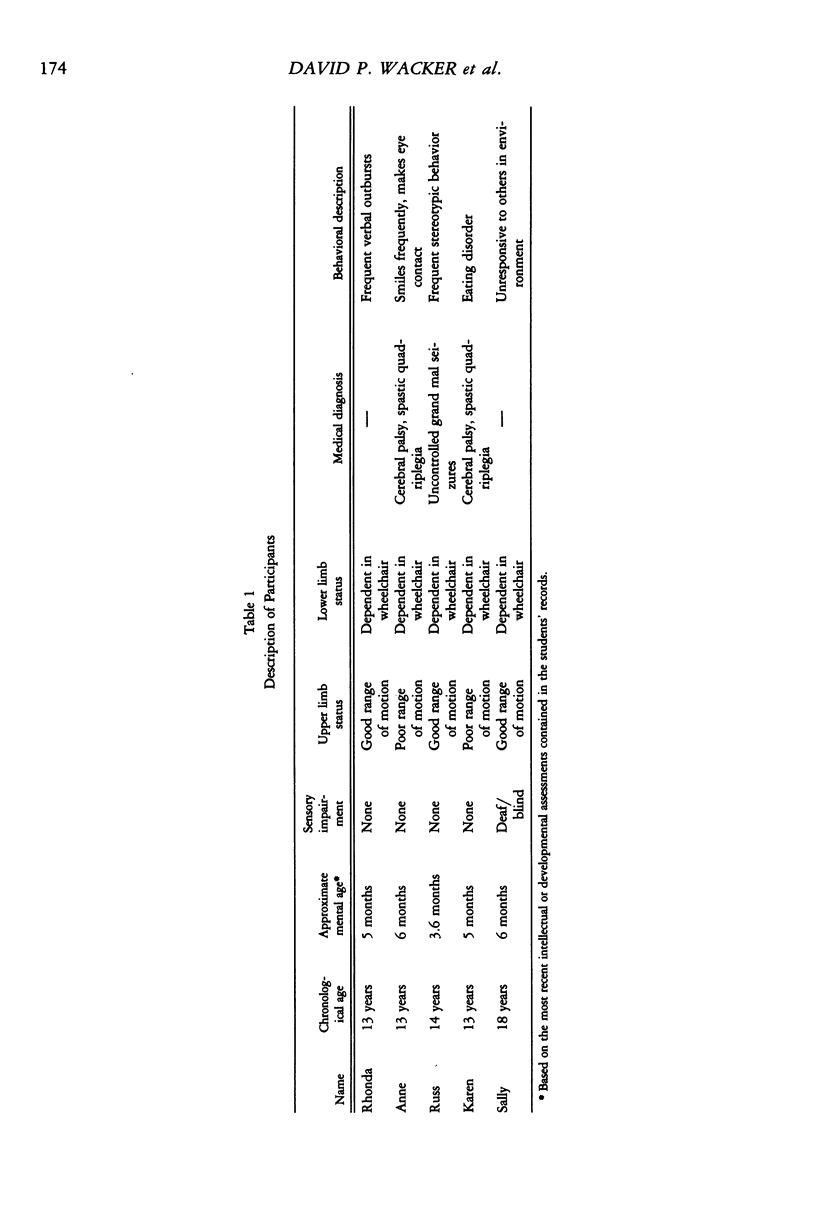
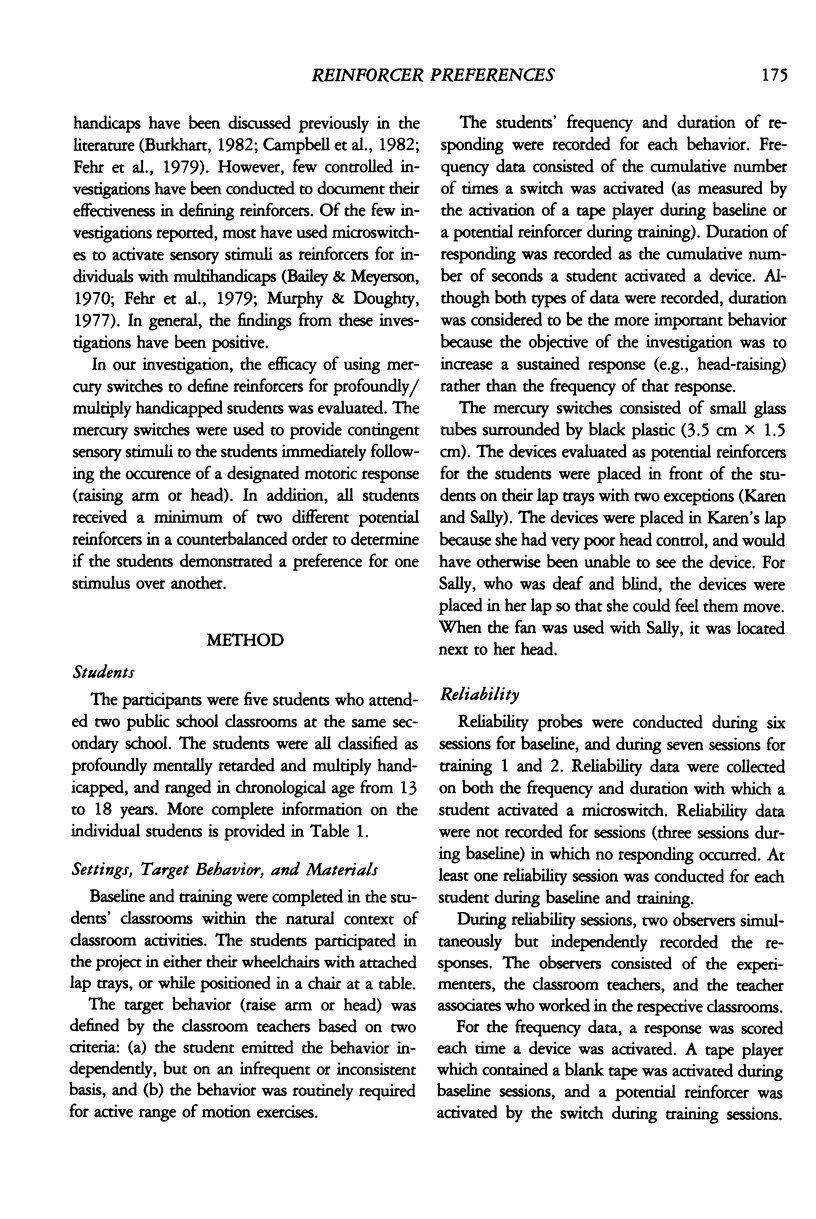
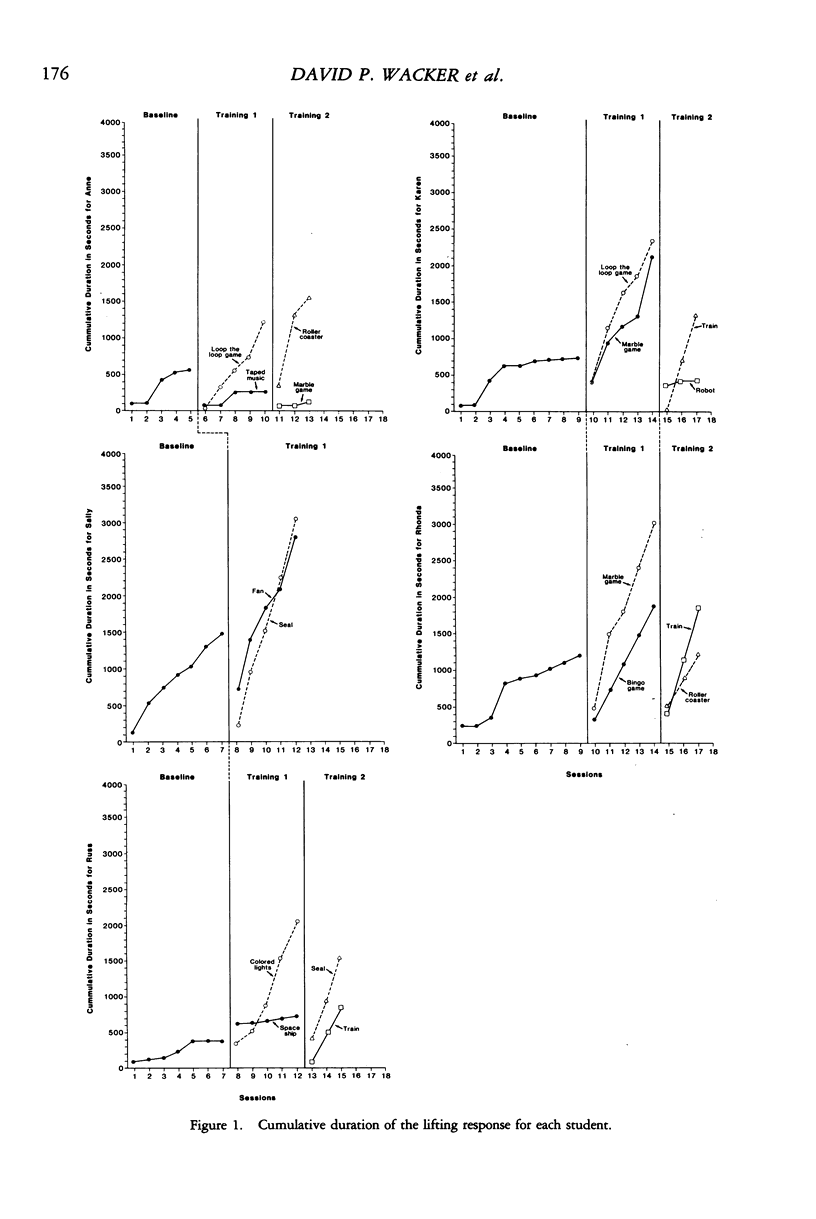
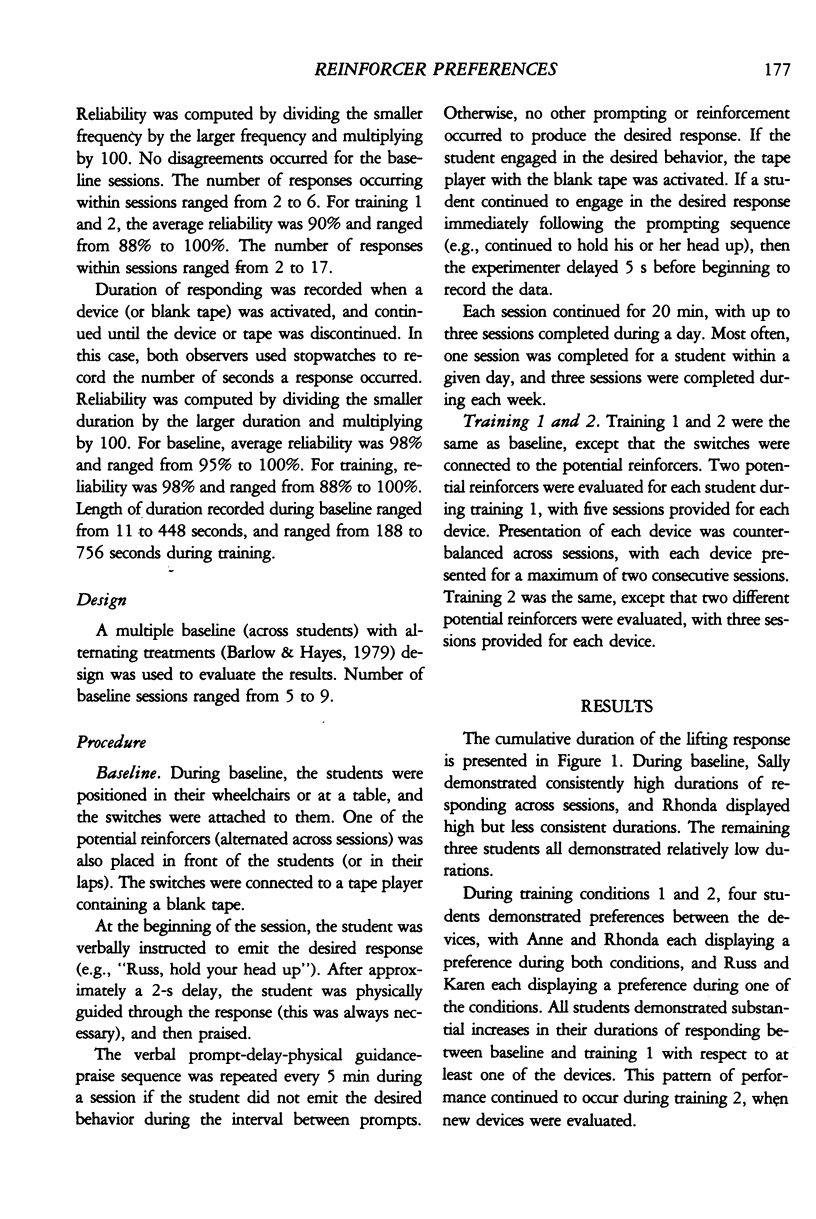
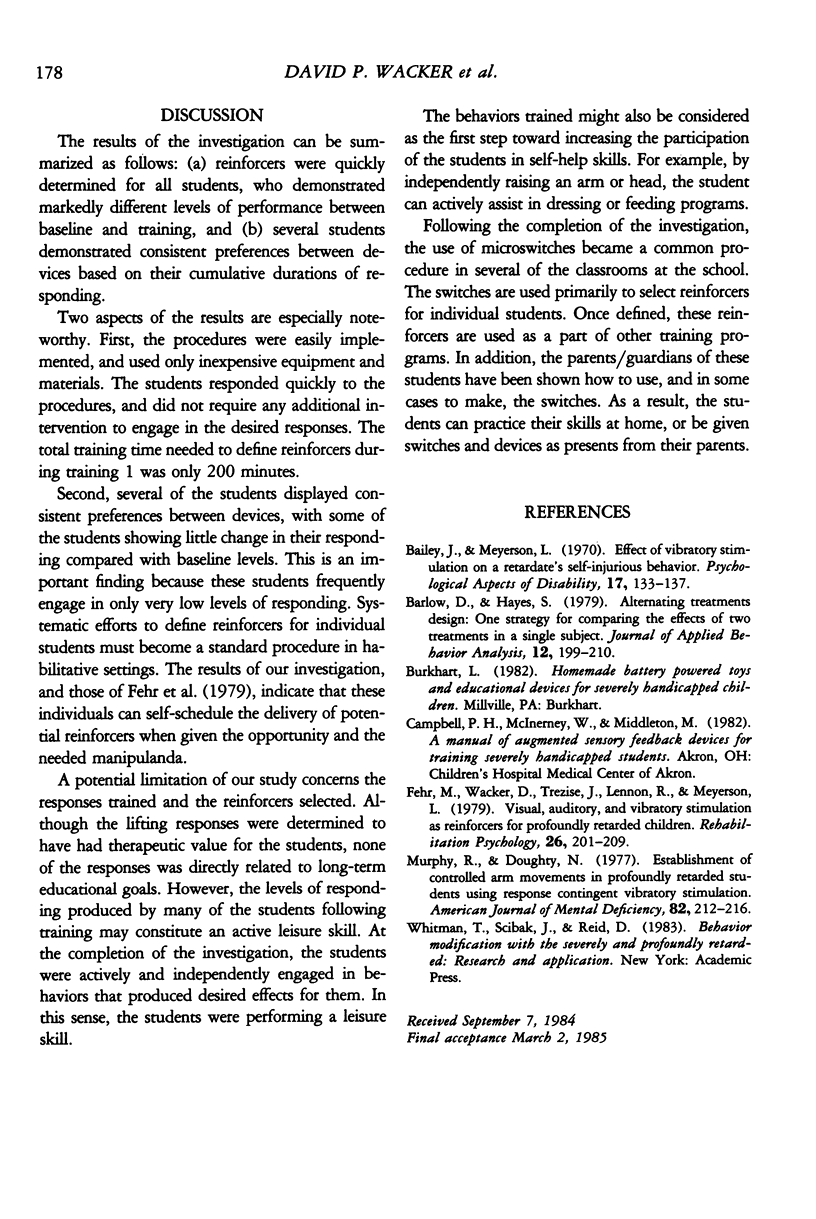
Selected References
These references are in PubMed. This may not be the complete list of references from this article.
- Barlow D. H., Hayes S. C. Alternating treatments design: one strategy for comparing the effects of two treatments in a single subject. J Appl Behav Anal. 1979 Summer;12(2):199–210. doi: 10.1901/jaba.1979.12-199. [DOI] [PMC free article] [PubMed] [Google Scholar]
- Murphy R. J., Doughty N. R. Establishment of controlled arm movements in profoundly retarded students using response contingent vibratory stimulation. Am J Ment Defic. 1977 Sep;82(2):212–216. [PubMed] [Google Scholar]


